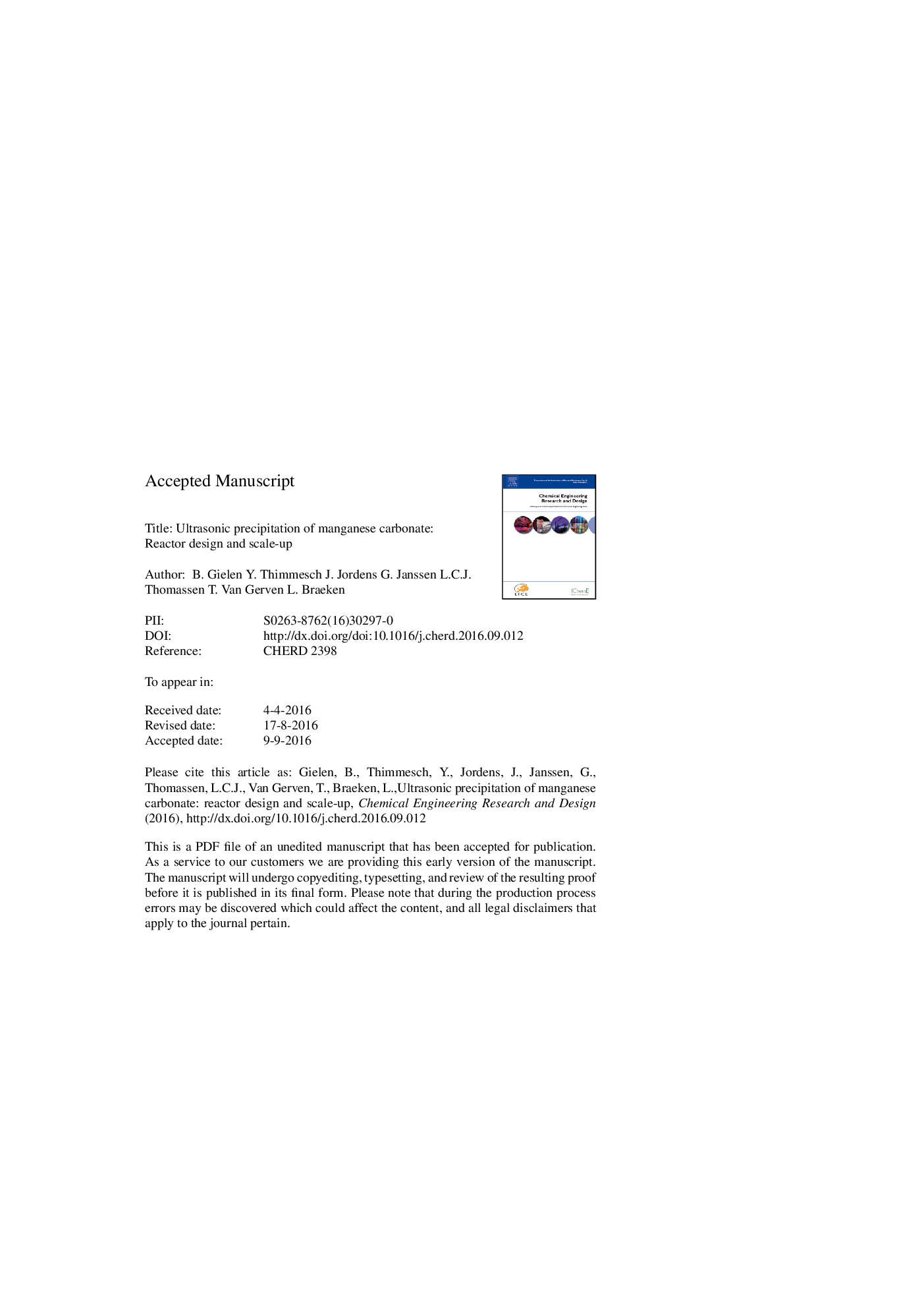| Article ID | Journal | Published Year | Pages | File Type |
|---|---|---|---|---|
| 4987451 | Chemical Engineering Research and Design | 2016 | 30 Pages |
Abstract
This study discusses the reactor design and a possible scale-up strategy for ultrasonic precipitation of manganese carbonate. Preliminary experiments, performed in a 200Â mL continuously stirred tank reactor (CSTR) equipped with an ultrasonic transducer or probe, identified the importance of generating a homogenously distributed ultrasonic field of about 40Â kHz to improve the sphericity of the powder. In this lab-scale reactor, spherical particles with a tap density of more than 2.0Â g/cm3 were obtained under sonication, compared to only 1.3Â g/cm3 during silent conditions. Alternatively, a design with an ultrasonic unit in a recirculation loop resulted in a similar relative improvement compared to silent conditions. However, since the recirculation reactor did not reach a tap density of above 2.0Â g/cm3, the scale-up of this configuration was discarded. In the end, a basic CSTR was scaled to 50Â L by using a single radial oscillating probe, operating at 40Â kHz and 1Â kW. This semi-pilot scale reactor was able to produce particles with a tap density of about 90% of the value attained at lab-scale although the power density was reduced by more than half.
Related Topics
Physical Sciences and Engineering
Chemical Engineering
Filtration and Separation
Authors
B. Gielen, Y. Thimmesch, J. Jordens, G. Janssen, L.C.J. Thomassen, T. Van Gerven, L. Braeken,
